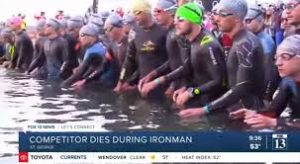
Several years ago, I went for a swim in Lake Michigan along the downtown ledge. But after about 15 minutes, I began to feel funny. I was dizzy, my heart was racing and I couldn’t catch my breath.
I couldn’t figure out what was wrong. I’m a regular pool lap swimmer. Was I disoriented from the chop in the lake? Seasick? Having a heart attack?
My field of vision began turning black at the edges. Terrified of fainting in the water and sinking too quickly for even the crackerjack lakefront lifeguards to spot in time, I swam desperately for the shore.
I stumbled out of the water at Olive Park, near Ohio Street, and onto the sand. I somehow made it back to my office, but ended up being taken by ambulance to the emergency room.
The ER conclusion: low blood sugar and dehydration, which can cause fainting.
I was perplexed. I hadn’t felt thirsty in the water.
Which turns out to be one of the problems of swimming in open water.
Swimming in Lake Michigan is nothing like swimming in a pool. The deaths of two swimmers in the recent New York City Triathlon, including 40-year-old Amy Marti h, of Elmhurst, was a grim reminder.
But those swimming along the ledge these days in preparation for area triathlons already knew it.
“Water is dangerous,” said Stuart Summers, 45, of the West Loop, who is training to swim 2.5 miles in a September Ironman event in Madison, Wis. “Everyone who does a triathlon approaches it with a sense of trepidation.
Leave a Reply